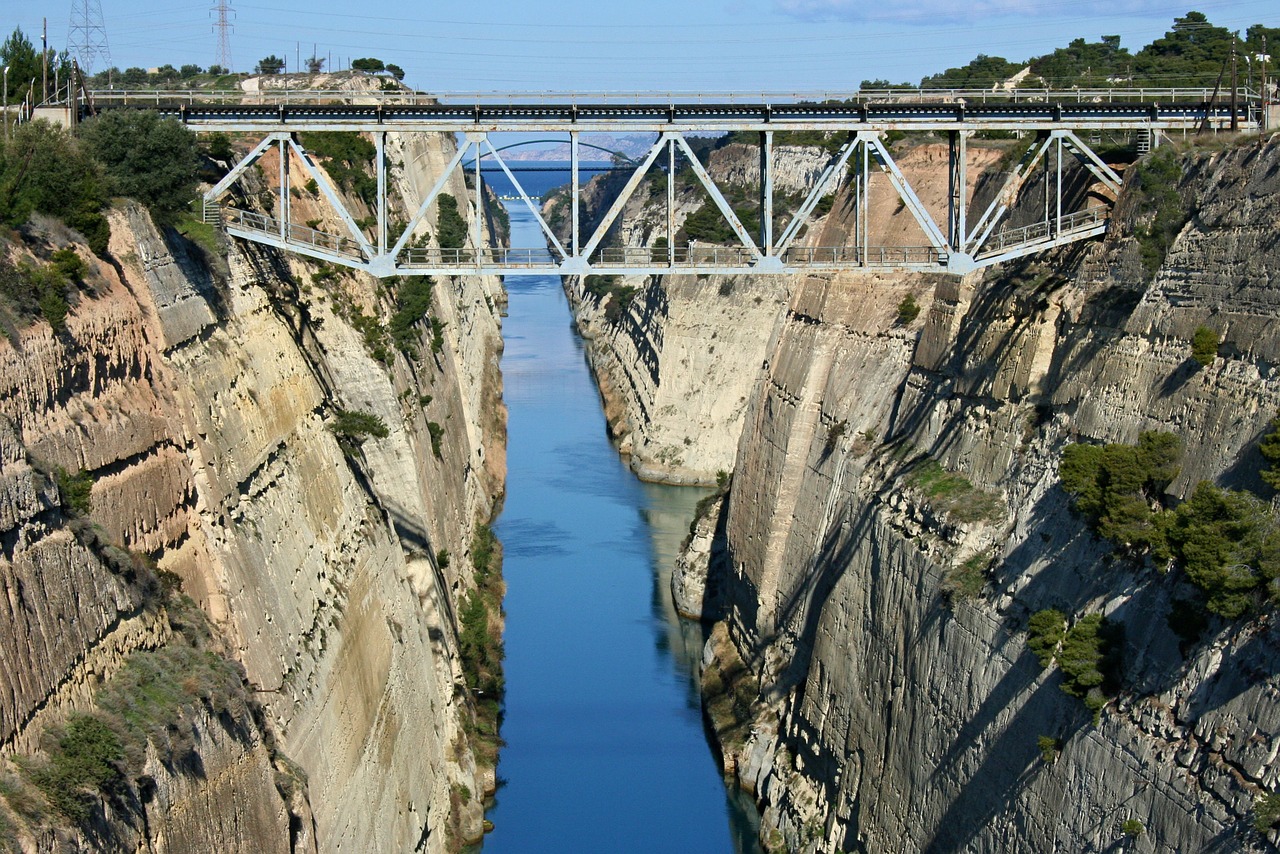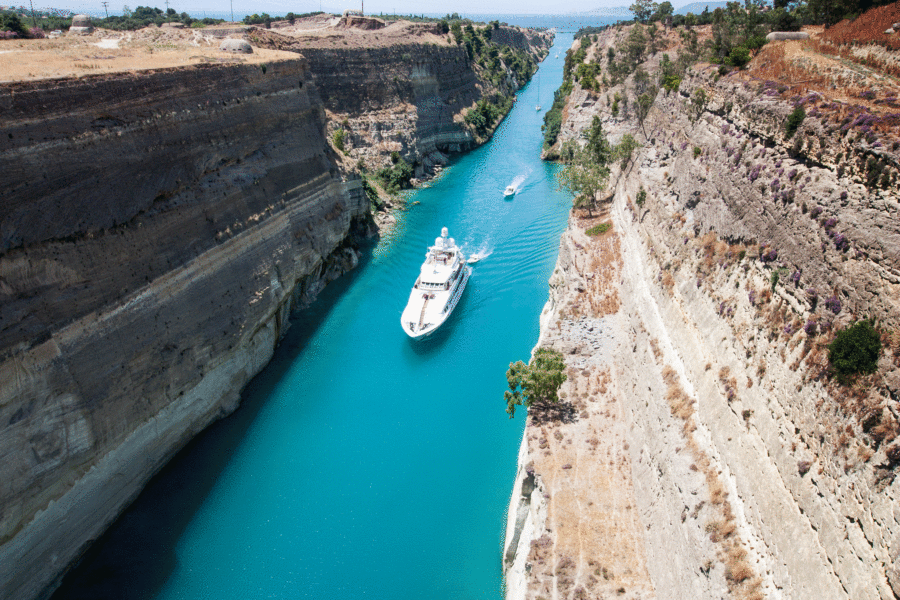Corinth Canal: More Eye Catching Than The Panama Canal?
The Corinth Canal has ancient origins and is one of the great engineering works of the 1800s, today it is a must-see while in Greece.
The following written content by AARON SPRAY

Everyone has heard of the Panama Canal and the Suez Canal – both massive feats of engineering (and everyone should visit the impressive Panama Canal). But has anyone heard of the – even more eye-catching – Corinth Canal in Greece? The Corinth Canal connects the Gulf of Corinth in the Ionian Sea with the Saronic Gulf in the Aegean Sea.
The Corinth Canal dramatically slices its way down through the narrow Isthmus of Corinth that separates the Peloponnese from the Greek mainland. That means that the Peloponnese Peninsula (with ancient Sparta that one can still see its ruins) is technically now an island.
A Canal Dreamt Of In Ancient Times

The canal had been proposed since classical times but it was never built. The isthmus was first crossed by boats in 600 BC when Periander (a tyrant of Ancient Corinth) built a ship railway so that small boats could be carried on wheeled cradles running in grooves.
At first, Periander dreamed of a canal, but he was defeated by the enormity of the task and so settled on building the paved slipway instead. Sailors dragged small ships on rollers, a method that was still used until the 13th century.
Even Alexandar the Great and later Caligula toyed with the idea of building a canal here.
But it was Roman Emperor Nero who struck the first blow himself (with a golden pickaxe in AD 67) and then promptly left it to the 6,000 Jewish slaves to do the rest of the work. But this mammoth Roman project was soon detailed by Gallic invasions for 1800 years.

The Corinth Canal Finally Built In The 19th Century
Finally, the project got underway in 1881 by the French (that was after the Suez Canal had been built in 1859). But it soon found itself hampered by financial problems and the engineering nightmare of the geology. Those factors forced the first financiers into bankruptcy.
The canal was eventually completed in 1893 but was never much of a success. It proved too narrow, too difficult to navigate, and had to be closed from time to time due to landslides from its steep walls. Consequently, it failed to attract the number of ships that had been anticipated. Read more from The Travel.





